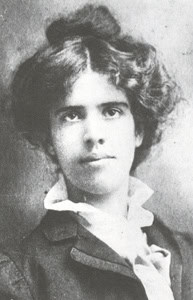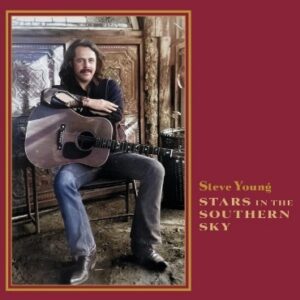James E. Akenson
What if you compiled one of the first Country Music encyclopedias that today isn’t known to lots of scholars, journalists, and serious fans? Even in the afterlife you would probably want your hard work to be remembered and frequently referenced.
Just how many scholars and fans of Country Music recognize the name Linnell Gentry much less can tell why he is important to Country Music? Don’t know? Let’s give Linnell Gentry his due, though. Linnell Gentry labored mightily before Country Music became cool for professors, journalists, and the general public.
I first learned of Linnell Gentry one day sometime in the late 1970s. I happened to be going to ‘my’ building, Bartoo Hall, on the campus of Tennessee Tech University
Edell Hearn, then Dean of the College of Education, came out the door as I was walking up to Bartoo Hall. Dean Hearn knew of my increasing work in Country Music. We talked a bit. I asked him if there were scholars of which he knew dealt with Country Music.
 He immediately mentioned Linnell Gentry at Middle Tennessee State University. I thanked him but either didn’t follow up…it was before email….or followed-up but didn’t get a response. In any event, I never forgot Linnell Gentry. My interest in Linnell Gentry has grown over time.
He immediately mentioned Linnell Gentry at Middle Tennessee State University. I thanked him but either didn’t follow up…it was before email….or followed-up but didn’t get a response. In any event, I never forgot Linnell Gentry. My interest in Linnell Gentry has grown over time.
An explosion of Country Music publications gradually took off after the 1970s. iconic publications such as Bill C Malone’s Country Music U.S.A., Nolan Porferfield’s Jimmie Rodgers: The Life and Times of America’s Blue Yodeler, and the Journal of American Folklore Hillbilly Music: Source and Symbol special issue.
There is good news. Now in the third decade of the 21st Century there is a vast number of books, journals, and electronic publications about Country Music. That’s good.
The vast number of books, journals, and electronic publications means it is impossible to keep up with the number of books, journals, and electronic publications focused on Country Music. That’s also bad news. Thanks Archie Campbell!
It certainly wasn’t a problem to keep up with Country Music scholarship, journals, and other sources in 1961. That’s the publication date when Martin College (Pulaski, Tennessee) professor and administrator E. Linnell Gentry published A History and of Country, Western, and Gospel Music.
There weren’t a lot of publications cascading through the market places of popular culture and academic writing. You couldn’t search the internet and find thousands of books, journals, and links in less than a second. The problem would be to find all the sources Linnell Gentry actually managed to put together.
Linnell Gentry’s encyclopedia first edition consisted of 380 pages divided into six sections.
- Introduction
- Magazine Articles on Country, Western, and Gospel Music Since 1904.
- Country Music Shows Since 1924.
- Biographies of Country, Western, and Gospel Singers, Musicians, and Comedians.
- Lists of Names of Country, Western, and Gospel Singers, Musicians, and Comedians.
- Miscellaneous.
- Gospel Singers
- Country Music Association.
It’s hard to imagine how Gentry could have had the time and resources at small, rural Martin College and still fulfill all his teaching and administrative duties.
Gentry moved to Middle Tennessee State University in Murfreesboro in 1962 as a faculty member in education plus finished his doctorate at Peabody College for Teachers in Nashville.
Even at the larger Middle Tennessee State University (MTSU), it’s still difficult to understand how Gentry could have had the time, energy, and resources to expand the 1969 2nd edition to 568 pages. None other than Tex Ritter approved of the 1969 2nd Edition. In 1972, the Scholarly Press of St. Clair Shores, Michigan republished Gentry’s original work in the 380 page version.
Linnell Gentry avoided one difficult question. He didn’t try to define Country Music.
There is no attempt in the book to present a definition of Country music, because the author feels that a thorough definition and understanding of Country Western and Gospel music may be obtained from the magazine Articles.
Linnell Gentry took the easy way out. Defining Country Music is something that has been attempted many times and always falls short. Scholars, journalists, bloggers and others always find a way to point out the shortcoming of definitions.
The first major section consisted of thirty-seven articles. Gentry avoided a most difficult task that continues into the third decade of the twenty-first century.
He avoided sticky wickets such as dealing with the concept of authenticity which vexes scholars, journalists, fans, and musicians alike. Gentry also didn’t wrestle with other sticky wickets dealing with culture wars, the memory of historical events, or racial and gender issues.

The first magazine Some Real American Music article came from the June, 1904 Harper’s Magazine. The article by none other than Emma Bell Miles (1879-1919) was published in Harper’s Magazine and also appeared as Chapter 8 in her book The Spirit of the Mountains published in 1905.
Some Real American Music stakes out assumptions that might bother twenty-first century writers with their interest in being inclusive and recognizing the significance of African Americans in Country Music.
…there is hidden among the mountains of Kentucky, Tennessee, and the Carolinas a people of whose inner nature and its musical expression almost nothing has been said. The music of the Southern mountaineer is not only peculiar, but, like himself, peculiarly American.
Miles might have romanticized the Appalachian culture, but many other well educated scholars and writers also romanticized Appalachia and the music to be found. She identified that the mountain fiddler didn’t place his fiddle under his chin, but held it “against the middle of his chest.”
As well, Miles dealt with a variety of ideas including the mountaineers sense of humour, the use of repetition in religious songs, romance, gambling, and violence. A song with a grim ending stated “The jury found me guilty, and the judge a-standing by has sent me down to Knoxville to lock me up to die.”
Miles found a way to weave romantic memories of “drowsy noons,” “Yodels ringing down the gulch,” “old Scottish ballads,” and “dancers bounding through Cripple Creek” and concluded with a paragraph long on romantic views.
Crude with a tang of the Indian wilderness, strong with the strength of the mountains….mellowed by the English of Chaucer’s time…surely this is folk-song of a high order.
Interestingly, Miles last sentence seems almost providential. “May it not one day give birth to a music that shall take a high place among the world ‘s great schools of expression?”
Emma Belle Miles would be flabbergasted if she could visit Nashville in 2024 and see the music industry and tourism. She would also be amazed at all the books, journals, and other writing about Country Music.
There are even academic conferences devoted to talking about the music she loved and what it has become over the years.
It’s not important from a Country Music standpoint….at least on the surface….but somewhere…don’t ask me for documentation….the end for Emma Belle Miles was not pleasant. She suffered mightily from tuberculosis…then again most everyone into the twentieth century experienced exposure to tuberculosis.
My mother Fern Harman Akenson would be a good example. Her lungs showed evidence of tuberculosis, but her lungs won. Sadly, Emma Belle Miles suffered a husband who demanded sexual favors even as she wasted away from her suffering.
If true, and I can’t prove it with a citation, just my memory, that just fits with many current discussions about women and Country Music. Tammy Wynette was correct that ‘Sometimes it’s hard to be a woman” even if “Stand By Your Man” caused a Second Wave feminist backlash, that ‘hard-to-be-woman” line is valid. Miles died at age thirty-nine from tuberculosis….just like Jimmie Rodgers “The Father of Country Music.”
Well that’s a lot about the first item in Linnell Gentry’s encyclopedia. Then again it’s an article with lots of facts, interpretations, and assumptions about what became a core element of Country Music. In fact, it sets the tone for the content of the whole encyclopedia.
What about the rest of Linnell Gentry’s encyclopedia?
Throughout the encyclopedia, Linnell Gentry chose items from the popular culture of his day. Gentry found articles in publications such as Time Magazine, Life Magazine, Saturday Evening Post, and prestigious newspapers such as the New York Times. You could encounter articles such as If Jesus Came, They Love Mountain Music, and Hillbilly Boom.
More impressive is Part IV Biographies of Country, Western, and Gospel Singers, Musicians, and Comedians. From A (Acuff, Roy) to Z (Jimmie Zac) 175 pages are packed with biographical information that is really quite stunning. Jimmie Zack….I’d never heard of him….attended Fair Oaks elementary school in Fair Oaks Arkansas.
Not only that but Gentry provides information such as Zack’s 1955-1956 stint at the WWVA Jamboree in Wheeling, West Virginia and songs recorded on Starday Records such as Jesus Has Saved My Soul. All-in-all, Gentry filled up nineteen lines related to Jimmie Zack. I’m impressed to put it mildly.
You can tell that I am impressed by Linnell Gentry and his Country Music encyclopedia. He produced a remarkable work before Barbara Mandrel could sing that she “was country when country wasn’t cool.”
No doubt there must have been some rolled eyes and other tools for being dismissive by professors at both Martin College and Middle Tennessee State University.
No doubt music professors at major universities wouldn’t have given it the time of day. But, here we are in the third decade of the twenty-first century. Country is cool. Linnell Gentry is cool….then and now. “Country On” sings Luke Bryan.
Yes indeed. Country On Linnell Gentry.





